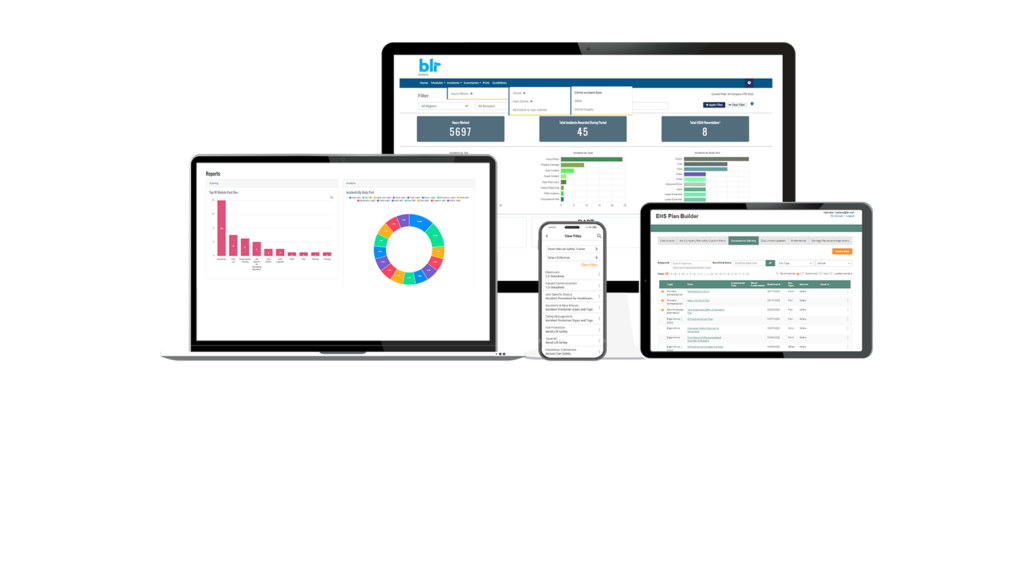
Does your company have an emergency action plan?
As a safety manager, you know natural disasters are inevitable and can strike anytime, anywhere, with varying impact. This is especially true for areas prone to hurricanes, tornadoes, floods, fires, and power outages. You can’t control these events, but you can control how you and your employees react to them. Putting a disaster prevention plan in place is not only a smart move but also essential to morale, employee safety, and harm reduction.
The Occupational Safety and Health Administration’s (OSHA) requirement for every business to create an emergency action plan (EAP) isn’t surprising, given the importance of ensuring employees can quickly exit their worksites in case of an emergency. However, OSHA’s guidelines can only take you so far. To thoroughly protect your workers, avoid financial loss, and foster a true sense of security, employers need to go above and beyond. Follow these guidelines and best practices to ensure your EAP is comprehensive and effective.
Minimum requirements
OSHA has established some specific requirements that every EAP must incorporate. The agency emphasizes the importance of creating a comprehensive plan that’s customized to your specific worksite layout, structural features, and emergency systems based on the findings of your workplace evaluation. These minimum requirements include detailed guidelines on how employees should respond to different types of emergencies.
These minimum requirements include:
• A means of reporting fires and other emergencies,
• Evacuation procedures and emergency escape routes,
• Procedures for employees who stay behind to operate critical plant operations before they evacuate,
• A system for accounting for employees following an emergency evacuation,
• Assigned rescue and medical duties for qualified personnel, and
• Names or job titles of people to be contacted following the evacuation.
In addition to the minimum requirements set by OSHA, there are other recommendations to consider when creating your EAP. Although not mandatory, OSHA suggests that your plan include details about the emergency alarm system, a backup communications system, and a secure location to store accounting records, legal documents, and an emergency contact list, among other vital documentation. Incorporating these elements into your EAP can significantly enhance its effectiveness.
EAP best practices
With many aspects of creating an EAP left up to the decision of the business, a lot of decisions regarding finer details are left up to you. Questions such as what kind of alarm system to install, the best evacuation plans for your facilities, and how you and your employees should report emergencies after the fact are just a few. The following best practices will help you answer them.
Risk analyses
During the EAP preparation stage, you and your safety team should identify probable emergencies that may occur in each facility and assess their potential damage level. These emergencies should include both natural and man-made incidents and account for as many scenarios as possible to create thorough emergency and evacuation plans.
Alarms and communication systems
When communicating emergencies in your workplace, using different alarms to indicate different emergencies is an effective way to ensure your message is conveyed simply, effectively, and quickly. For instance, you could use one type of alarm to signal tornadoes, another for fires, and yet another for flash floods. This system allows your employees to identify the type of emergency, making it easier to act quickly and appropriately.
Calling for help
Having an alarm system that automatically notifies fire departments and other emergency personnel is the ideal scenario for communicating emergency situations. However, in situations when your system lacks the capability or is compromised, it’s important to have several workers designated to manually call for help. This will ensure the necessary authorities are notified immediately and can respond promptly.
Evacuation plans
To keep evacuations quick, orderly, and safe, you will need a rehearsed, well-thought-out plan. Important elements include:
• Clearly marked escape routes and exits
• Secondary escape routes
• Plans to assist guests and disabled workers
• Designated safe areas
• Methods for accounting for evacuated workers
If you follow these mandates and best practices, you’ll have quite a few procedures to track, update, and relay to your workforce. BLR’s environment, health, and safety (EHS) management solutions can help get your programs up to speed and enable you to excel in your industry with EHS Hero’s built-for-action tools.



